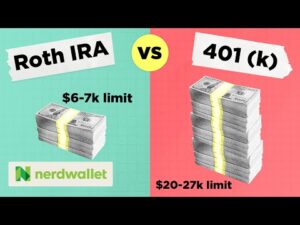Embrace Year-End Tax Strategy With Charitable Giving Twist
As the year comes to a close, cryptocurrency investors have the opportunity to maximize their tax benefits by combining tax-loss harvesting with charitable donations. This strategic approach not only allows investors to optimize their tax positions but also supports worthy causes through philanthropic giving.
Merging Tax-Loss Harvesting and Charitable Contributions
Tax-loss harvesting in the crypto world involves selling digital assets at a loss to offset capital gains taxes. This method is particularly advantageous given the volatile nature of the crypto market. By strategically timing the sale of assets, investors can reduce their tax liabilities. In the United States, investors can offset capital gains or reduce ordinary income by up to $3,000 annually and carry forward any additional losses.
At the same time, donating cryptocurrencies such as bitcoin (BTC) to charities has gained popularity as a tax-efficient method of supporting philanthropic causes. The Internal Revenue Service (IRS) classifies cryptocurrency as property, which means that donations can be tax-deductible to the fullest extent permitted by law. By donating cryptocurrencies directly to charities, donors can potentially avoid capital gains taxes that would be incurred if the crypto were sold and then donated in cash. Furthermore, donors can typically deduct the fair market value of the cryptocurrency at the time of donation.
The Role of Organizations like The Giving Block
Organizations like The Giving Block are leading the way in facilitating crypto donations. They provide platforms for donors to contribute various cryptocurrencies, including BTC, ETH, and USDC, to a wide range of charitable organizations. The existence of such platforms demonstrates the growing acceptance and use of cryptocurrency in the nonprofit sector, offering a tax-efficient avenue for donors.
Simple and Secure Process
The process of donating cryptocurrency is designed to be simple and secure. Donors have the option to choose from a diverse selection of charities, select the cryptocurrency and the amount they wish to donate, and complete the transaction using a wallet address provided by the charity. Additionally, donors can choose to remain anonymous while still receiving a receipt for tax purposes.
Endorsements and Impact
Crypto philanthropy has gained significant endorsements from influential figures in both the crypto and nonprofit sectors. Notable donations, such as Vitalik Buterin's $1B SHIB donation and the Pineapple Fund's contribution of 5,500 BTC, highlight the potential impact of charitable acts involving cryptocurrencies.
Combining Tax-Loss Harvesting and Charitable Giving
As the end of the financial year approaches, crypto investors are encouraged by advisors to consider a combined approach of tax-loss harvesting and charitable giving. This strategy not only offers potential tax benefits but also allows investors to make a positive contribution to societal causes. With organizations like The Giving Block facilitating these donations, contributing to charities through crypto assets is becoming increasingly mainstream, providing investors with the opportunity to support causes they care about while optimizing their tax positions.
Are you considering implementing a tax-loss harvesting strategy and/or making a charitable donation? Share your thoughts and opinions on this subject in the comments section below.
Frequently Asked Questions
What are the benefits of having a gold IRA?
You can save money on retirement by putting your money into an Individual Retirement Account. It's not subject to tax until you withdraw it. You can decide how much money you withdraw each year. There are many types to choose from when it comes to IRAs. Some are better for those who want to save money for college. Others are designed for investors looking for higher returns. Roth IRAs, for example, allow people to contribute after they turn 59 1/2. They also pay taxes on any earnings when they retire. Once they start withdrawing money, however, the earnings aren’t subject to tax again. This type account may make sense if it is your intention to retire early.
A gold IRA is similar to other IRAs because it allows you to invest money in various asset classes. Unlike a regular IRA where you pay taxes on gains, a gold IRA doesn't require you to worry about taxation while you wait to get them. People who want to invest their money rather than spend it make gold IRA accounts a great option.
Another benefit to owning IRA gold is the ability to withdraw automatically. This eliminates the need to constantly make deposits. To ensure that you never miss a payment, you could set up direct debits.
Gold is one of today's most safest investments. It is not tied to any country so its value tends stay steady. Even in times of economic turmoil gold prices tend to remain stable. This makes it a great investment option to protect your savings from inflation.
What does a gold IRA look like?
The Gold Ira Accounts are tax-free investment options for those who want to make investments in precious metals.
You can purchase physical gold bullion coins anytime. To start investing in gold, it doesn't matter if you are retired.
The beauty of owning gold as an IRA is you can hold on to it forever. When you die, your gold assets won't be subjected to taxes.
Your heirs inherit your gold without paying capital gains taxes. It is not required that you include your gold in the final estate report because it remains outside your estate.
You'll first have to set up an individual retirement account (IRA) to open a gold IRA. Once you've completed this step, an IRA administrator will be appointed to your account. This company acts as a middleman between you and the IRS.
Your gold IRA custody will take care of the paperwork and send the forms to IRS. This includes filing annual reports.
Once you've established your gold IRA, you'll be able to purchase gold bullion coins. The minimum deposit required to purchase gold bullion coins is $1,000 If you make more, however, you will get a higher interest rate.
When you withdraw your gold from your IRA, you'll pay taxes on it. If you are withdrawing your entire balance, you will owe income tax plus a 10% penalty.
If you only take out a very small percentage of your income, you may not need to pay tax. However, there are exceptions. If you take out 30% of your total IRA assets or more, you will owe federal income taxes and a 20 percent penalty.
It's best not to take out more 50% of your total IRA investments each year. You'll be facing severe financial consequences if you do.
Can I own a gold ETF inside a Roth IRA
Although a 401k plan might not provide this option, you should still consider other options like an Individual Retirement Account (IRA).
An IRA traditional allows both employees and employers to contribute. A Employee Stock Ownership Plan, or ESOP, is another way to invest publicly traded companies.
An ESOP is a tax-saving tool because employees have a share of company stock as well as the profits that the business generates. The money you invest in the ESOP will be taxed at a lower rate than if it were directly held by the employee.
An Individual Retirement Annuity (IRA) is also available. With an IRA, you make regular payments to yourself throughout your lifetime and receive income during retirement. Contributions to IRAs can be made without tax.
What are the benefits of a gold IRA
Many benefits come with a gold IRA. It is an investment vehicle that can diversify your portfolio. You control how much money goes into each account and when it's withdrawn.
You also have the option to roll over funds from other retirement accounts into a gold IRA. This makes for an easy transition if you decide to retire early.
The best thing about investing in gold IRAs is that you don’t need any special skills. They're available at most banks and brokerage firms. Withdrawals can be made instantly without the need to pay fees or penalties.
That said, there are drawbacks too. The volatility of gold has been a hallmark of its history. So it's essential to understand why you're investing in gold. Are you looking for growth or safety? Do you want to use it as an insurance strategy or for long-term growth? Only when you are clear about the facts will you be able take an informed decision.
If you plan to keep your gold IRA indefinitely, you'll probably want to consider buying more than one ounce of gold. One ounce won't be enough to meet all your needs. Depending on your plans for using your gold, you may need multiple ounces.
If you're planning to sell off your gold, you don't necessarily need a large amount. You can even manage with one ounce. But, those funds will not allow you to buy anything.
How to open a Precious Metal IRA
First, you must decide if your Individual Retirement Account (IRA) is what you want. Once you have decided to open an Individual Retirement Account (IRA), you will need to complete Form 806. You will then need to complete Form 5204 in order to determine which type IRA you are eligible. This form must be submitted within 60 days of the account opening. After this, you are ready to start investing. You can also contribute directly to your paycheck via payroll deduction.
Complete Form 8903 if your Roth IRA option is chosen. Otherwise, it will be the same process as an ordinary IRA.
To qualify for a precious-metals IRA, you'll need to meet some requirements. The IRS says you must be 18 years old and have earned income. You cannot earn more than $110,000 annually ($220,000 if married filing jointly) in any one tax year. And, you have to make contributions regularly. These rules apply to contributions made directly or through employer sponsorship.
A precious metals IRA can be used to invest in palladium or platinum, gold, silver, palladium or rhodium. However, you can't purchase physical bullion. This means that you will not be allowed to trade shares or bonds.
Your precious metals IRA may also be used to invest in precious-metal companies. Some IRA providers offer this option.
There are two major drawbacks to investing via an IRA in precious metals. They aren't as liquid as bonds or stocks. This makes it harder to sell them when needed. Second, they don’t produce dividends like stocks or bonds. Also, they don't generate dividends like stocks and bonds. You will eventually lose money rather than make it.
Should You Open a Precious Metal IRA?
It is essential to be aware of the fact that precious metals do not have insurance coverage before opening an IRA. There is no way to recover money that you have invested in precious metals. All your investments can be lost due to theft, fire or flood.
This type of loss can be avoided by investing in physical silver and gold coins. These items are timeless and have a lifetime value. If you were to sell them today, you would likely receive more than what you paid for them when they were first minted.
If you decide to open an IRA account, choose a reputable company that offers competitive rates and products. It's also wise to consider using a third-party custodian who will keep your assets safe while giving you access to them anytime.
If you decide to open an account, remember that you won't see any returns until after you retire. Keep your eyes open for the future.
Statistics
- If you accidentally make an improper transaction, the IRS will disallow it and count it as a withdrawal, so you would owe income tax on the item's value and, if you are younger than 59 ½, an additional 10% early withdrawal penalty. (forbes.com)
- (Basically, if your GDP grows by 2%, you need miners to dig 2% more gold out of the ground every year to keep prices steady.) (smartasset.com)
- If you take distributions before hitting 59.5, you'll owe a 10% penalty on the amount withdrawn. (lendedu.com)
- Instead, the economy improved, stocks rebounded, and gold plunged, losing 28 percent of its value in 2013. (aarp.org)
- Contribution limits$6,000 (49 and under) $7,000 (50 and up)$6,000 (49 and under) $7,000 (50 and up)$58,000 or 25% of your annual compensation (whichever is smaller) (lendedu.com)
External Links
law.cornell.edu
- 7 U.S. Code SS7 – Designation Boards of Trade as Contract Markets
- 26 U.S. Code SS 408 – Individual retirement funds
finance.yahoo.com
irs.gov
forbes.com
- Gold IRA, Add Sparkle to Your Retirement Nest egg
- Understanding China's Evergrande Crisis – Forbes Advisor
How To
Gold Roth IRA guidelines
The best way to invest for retirement is by starting early. Start saving as soon as possible, usually at age 50. You can continue to save throughout your career. To ensure sufficient growth, it is vital that you contribute enough each year.
You also want to take advantage of tax-free opportunities such as a traditional 401(k), SEP IRA, or SIMPLE IRA. These savings vehicles enable you to make contributions while not paying any taxes on the earnings, until they are withdrawn. This makes them a great choice for people who don’t have access employer matching funds.
Save regularly and continue to save over time. If you don't contribute the maximum amount, you will miss any tax benefits.
—————————————————————————————————————————————————————————————-
By: David Sencil
Title: Crypto Tax Planning: Optimizing Tax Benefits Through Tax-Loss Harvesting and Charitable Giving
Sourced From: news.bitcoin.com/crypto-tax-planning-merging-tax-loss-harvesting-with-charitable-giving/
Published Date: Tue, 19 Dec 2023 00:15:21 +0000













